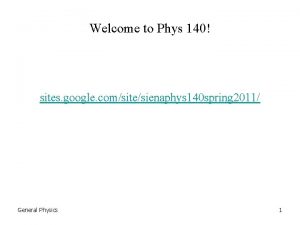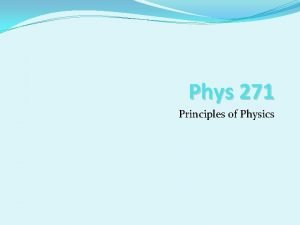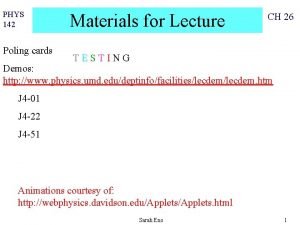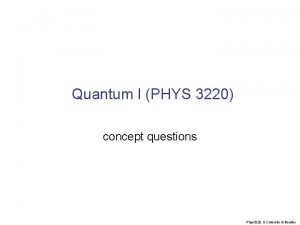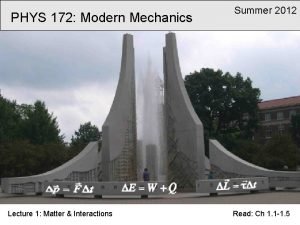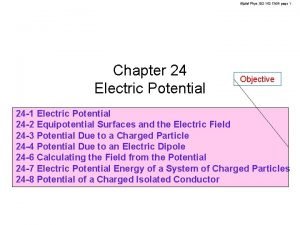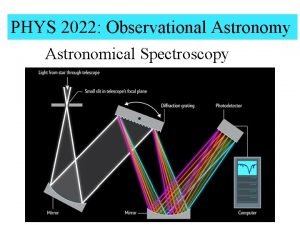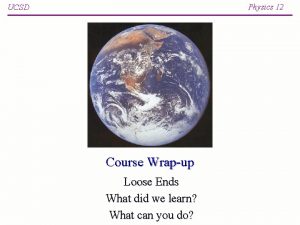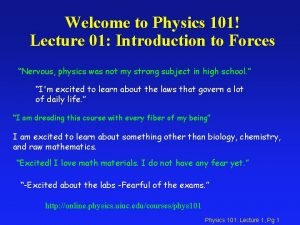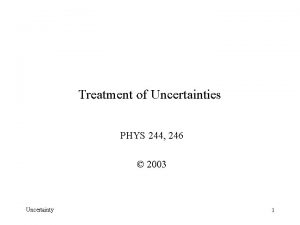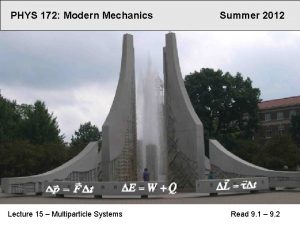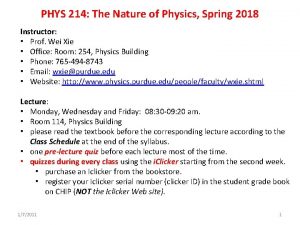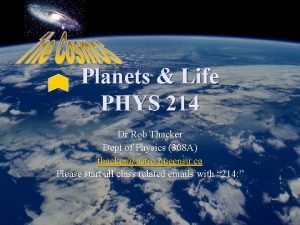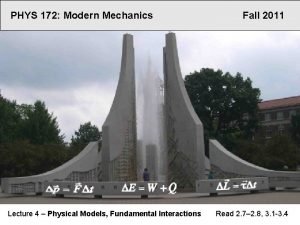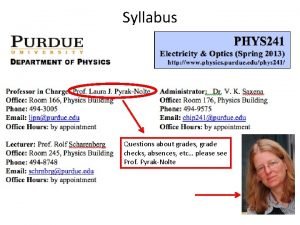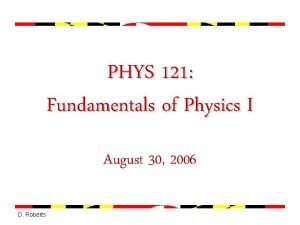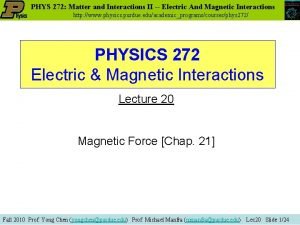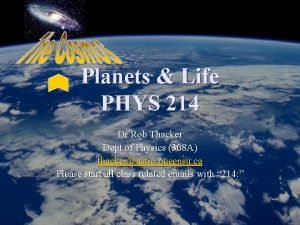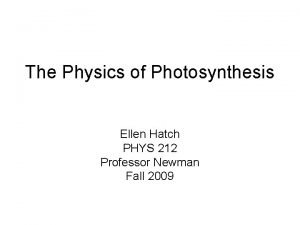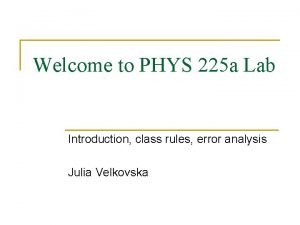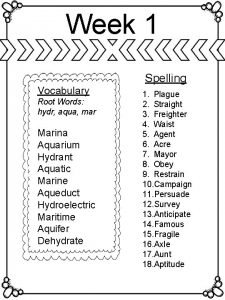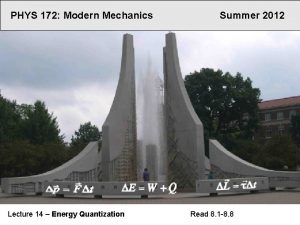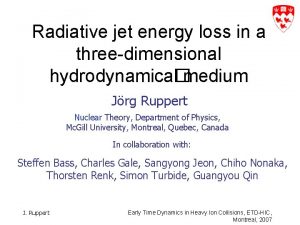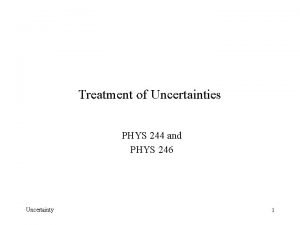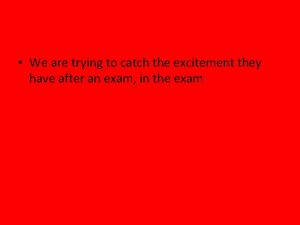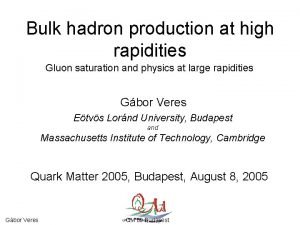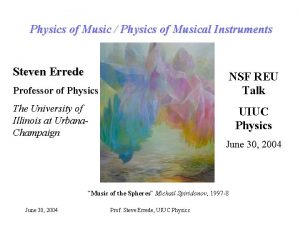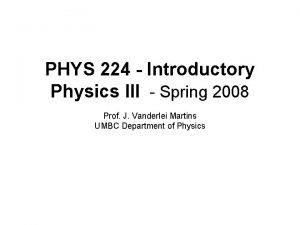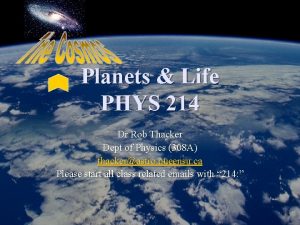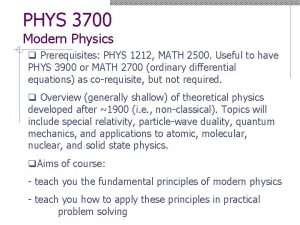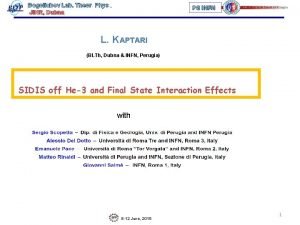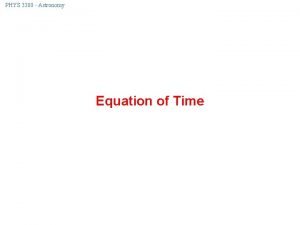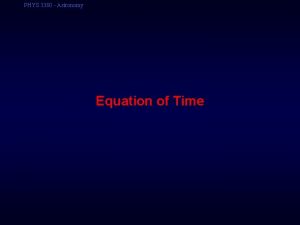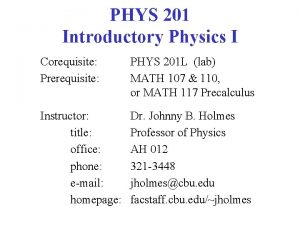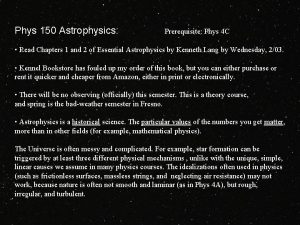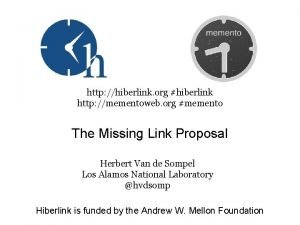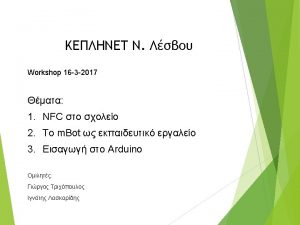http ouhos org http ouhos org http phys








































- Slides: 40


http: //ouhos. org/

http: //ouhos. org/


http: //phys. wordpress. com/category/classical-physics/


http: //www. leancrew. com/all-this/2010/07/bathroom-scales-and-robert-hooke/

http: //www. leancrew. com/all-this/2010/07/bathroom-scales-and-robert-hooke/


F = -kx Hooke’s Law

http: //www. ishidaindia. com/load-cell. html

It is beautifully simple. If the spring extends by distance x on application of mass m, http: //www. ishidaindia. com/load-cell. html

It is beautifully simple. If the spring extends by distance x on application of mass m, then according to Hooke’s Law it will extend by 2 x if a mass 2 m is applied http: //www. ishidaindia. com/load-cell. html

http: //www. ishidaindia. com/load-cell. html

http: //www. ishidaindia. com/load-cell. html

http: //www. ishidaindia. com/load-cell. html

http: //commons. wikimedia. org/wiki/File: 14_Robert_Hooke. _Pencil_Drawing. jpg


http: //www. le ancrew. com/ allthis/2010/07/ bathroomscales-androbert-hooke/

http: //blogs. nature. com/london/2007/10/

SLIDE 11: THE CASTLE OF KNOWLEDGE (RECORDES, 1575) What happened can be seen on the title page of Recordes' book "The Castle of Knowledge, " the first science book in English, published in 1575. The wheel of fortune is turned, not by the wisdom of God, but by the ignorance of man. And, as the role of God, the final cause, was taken over by human knowledge, the whole notion of causal explanation came under attack.

ll rely on Hooke’s Law. Robert Hooke was a brilliant 17 th century English scientist/engineer/architect whose name is not as well known as it should be because: He was a contemporary of Isaac Newton’s, and anyone working at the same time as Newton is likely to be overshadowed. He got on Newton’s bad side, which was not the right side to be on, as Gottfried Leibnitz and William Chaloner could attest. Hooke claimed that some of Newton’s work in gravitation was derivative of his own, an affront Newton never forgave, even after Hooke’s death in 1703. When Newton supervised the Royal Society’s move from Gresham College in 1705, Hooke’s portrait and some of his experimental instruments were conveniently lost. Still, Hooke’s name is well known among engineers because of his law of linear elasticity, a cornerstone of much civil and mechanical engineering analysis. Amazingly, Hooke first published his law as an anagram. It wasn’t until a few years later that he published a proper paper on the subject, “De Potentia Restitutiva, or Of Spring. ” Here’s his explanation of the anagram:

About two years since I printed this Theory in an Anagram at the end of my Book of the Descriptions of Helioscopes, viz. c e i i i n o s s s t t u v, id est, Ut tensio sic vis; That is, The Power of any Spring is in the same proportion with the Tension thereof: That is, if one power stretch or bend it one space, two will bend it two, and three will bend it three, and so forward. Now as the Theory is very short, so the way of trying it is very easie. The usual translation of Ut tensio sic vis is As the extension, so the force: there is a linear relationship between force and deflection. In mathematical terms, Hooke’s Law is typically written like this, F=kx where F is the force, x is the deflection, and k is the constant of proportionality, usually called the spring constant. “Of Spring” goes on to give several examples of springy things and describes experiments that prove the linear relationship. His claim to universality comes in this paragraph:

From all which it is very evident that the Rule or Law of Nature in every springing body is, that the force or power thereof to restore it self to its natural position is always proportionate to the Distance or space it is removed therefrom, whether, it be by rarefaction, or separation of its parts the one from the other, or by a Condensation, or crowding of those, parts nearer together. Nor is it observable in these bodys only, but in all other springy bodies whatsoever, whether Metal, Wood, Stones, baked Earths, Hair, Horns, Silk, Bones, Sinews, Glass, and the like. Respect being had to the particular figures of the bodies bended, and the advantagious or disadvantagious ways of bending them. You could make a very good argument that this paragraph is just bullshit. Of these materials, only Glass and baked Earths (assuming by the latter he means ceramics) follow Hooke’s Law reasonably well up to their breaking point. The others exhibit distinctly non-Hookean behavior over some range of loading. They either don’t spring back to their original position (metals stressed above their yield point) or aren’t linear in their elasticity (sinews). Hooke must have known this. One of his prime examples is the coiled spring, made by bending a metal wire into a helix. While the finished spring certainly follows Hooke’s Law up to some load, the wire itself just as certainly didn’t follow Hooke’s Law as it was being bent into the coiled form in the first place—if it had, it would have sprung back to

What was important to Hooke, and what is still important to us, is that many materials are linearly elastic over the range of loading they are typically subjected to in the finished product. Yes, you can bend a piece of wood beyond the linear range, but you don’t build a house out of wood stressed that highly. The wood joists in the floor below me are bending slightly under my weight, but they will spring back when I leave the room. Most manmade structures and devices are built to be used within the linearly elastic range, and that’s why Hooke’s Law works. So, back to load cells. The simplest load cell is an old-fashioned spring fish scale. Here’s a handsome example whose photo I nicked from Malolo Blue Water Tackle. The pointer moves along the body as the coiled spring inside deflects under the weight of the fish. The weight markings are uniformly spaced because of Hooke’s Law: As the extension, so the force. But Hooke’s Law tells us that we don’t need to used coiled springs to measure force. Any structure that isn’t overstressed will display a linear relationship between force and deflection; we just have to be able to measure that deflection. Most structures don’t deflect visibly when lightly loaded, but we can still measure their deflection by drawing on a little knowledge from electrical engineering.

Tryalls and tribulations At times, transcribing the Hooke folio was exhausting, taking hours to decipher a single scrawled word, and I felt that my frustration mirrored Hooke’s own. He increasingly records unreasonable obstructions to his theories including the principle, later expressed in Newton’s first law, that ‘a body once put into motion would move perpetually if it met with no resistance’, the decrease in motion being proportional to the amount of resistance. However, the Society were unconvinced, as Hooke complained, ‘instead of hearing grounds and reason, experiments were always called for and all loaded with objections little to purpose’. Eventually, to demonstrate that resistance decreases motion, Hooke showed the Society something that I gradually realised was a ‘Newton’s cradle’ http: //blogs. nature. com/london/2007/10/


http: //phys. wordpress. com/category/classical-physics/

Hooke manuscript is returned home May 18, 2006 BBC News is reporting about a lost and found Hooke manuscript (see also this older news): The hand-written notes are thought to contain a “treasure trove” of information about the early endeavours of the UK’s academy of science. The document, which had lain hidden in a house in Hampshire, was rescued from a public auction after a fundraising effort pulled in the £ 940, 000 needed. As you probably know, Hooke was famous (among other things) for his frequent disputes with other physicists (most notably Newton and Huygens) on the priority of various discoveries, and this new manuscript could help in settling (a bit late) some of them. http: //phys. wordpress. com/category/classical-physics/

Hooke manuscript is returned home May 18, 2006 BBC News is reporting about a lost and found Hooke manuscript (see also this older news): The hand-written notes are thought to contain a “treasure trove” of information about the early endeavours of the UK’s academy of science. The document, which had lain hidden in a house in Hampshire, was rescued from a public auction after a fundraising effort pulled in the £ 940, 000 needed. As you probably know, Hooke was famous (among other things) for his frequent disputes with other physicists (most notably Newton and Huygens) on the priority of various discoveries, and this new manuscript could help in settling (a bit late) some of them. http: //phys. wordpress. com/category/classical-physics/

Hooke manuscript is returned home By Rebecca Morelle BBC News science reporter The manuscript will be preserved analysed More details The long-lost manuscript belonging to pioneering scientist Robert Hooke has returned to the Royal Society. The hand-written notes are thought to contain a "treasure trove" of information about the early endeavours of the UK's academy of science. A digitised version of the notes will eventually be available on the web. The document, which had lain hidden in a house in Hampshire, was rescued from a public auction after a fundraising effort pulled in the £ 940, 000 needed. The "white knights" have been revealed as the Wellcome Trust, which gave £ 469, 000, and 150 donors who came forward after the Royal Society appealed to its fellows and the general public. The manuscript will now be rebound, transcribed and carefully analysed; and infrared scanning will be used to reveal some notes that have become illegible over time. http: //news. bbc. co. uk/1/hi/sci/tech/4990266. stm

A polymath Robert Hooke, who died in 1703, was a polymath whose many contributions included coining the term "cell", devising a law of elasticity, creating spring regulators for time pieces; and designing several major buildings, such as the Monument to the Fire of London. In 1662, Hooke became curator of experiments at the Royal Society, and he was later elected a fellow in 1664. The fragile pages of the manuscript contain Hooke's notes of Royal Society meetings that took place in the 17 th Century. They are scattered with sketches and marginal observations, which the society hope will give insight into the man whose work crossed so many fields. http: //news. bbc. co. uk/1/hi/sci/tech/4990266. stm

Professor Lisa Jardine, a historian from Queen Mary, University of London, and biographer of Robert Hooke, was the first person to alert the Royal Society to the existence of the document. She will be working with the society to analyse the notes. "These are the records of what happened at the Royal Society between late 1677 and late 1682. There could well be a Newton experiment in there that nobody knows about, " she said. "Hooke was a colourful, controversial character. These minutes are more likely to tell us about his interactions with other people. For a biographer like me, they will give us a much fuller picture. "I think, in terms of modern science, they will tell us about the origins of laboratory science, research team interaction, and how controversy and competition fuelled discovery. They will reveal the mechanics, the machinery of scientific discovery. " http: //news. bbc. co. uk/1/hi/sci/tech/4990266. stm

Scientific disputes Hooke was involved in many disputes with scientists who he accused of plagiarising his ideas - the most famous being his feud with Isaac Newton, who he accused of stealing his ideas about gravity. Professor Jardine said the manuscript might shed light on some of these disagreements. "There are four pages which may tell us whether Hooke really had beaten Christian Huygens to a balanced spring watch for measuring longitude. " Martin Rees, president of the Royal Society, added: "The manuscript is significant to both scientists and non-scientists, and covers pioneering experiments relating to astronomy, gravity and microscopy. "The descriptions of his experiments are the closest one could get to an original experiment without actually being there. We hope that scientists and non-scientists alike will soon be able to appreciate how exciting this discovery is. " The papers will also go on display to the general public at the Royal Society's Summer Science Exhibition in July. http: //news. bbc. co. uk/1/hi/sci/tech/4990266. stm

http: //www. leancrew. com/all-this/2010/07/bathroom-scales-and-robert-hooke/


ll rely on Hooke’s Law. Robert Hooke was a brilliant 17 th century English scientist/engineer/architect whose name is not as well known as it should be because: He was a contemporary of Isaac Newton’s, and anyone working at the same time as Newton is likely to be overshadowed. He got on Newton’s bad side, which was not the right side to be on, as Gottfried Leibnitz and William Chaloner could attest. Hooke claimed that some of Newton’s work in gravitation was derivative of his own, an affront Newton never forgave, even after Hooke’s death in 1703. When Newton supervised the Royal Society’s move from Gresham College in 1705, Hooke’s portrait and some of his experimental instruments were conveniently lost. Still, Hooke’s name is well known among engineers because of his law of linear elasticity, a cornerstone of much civil and mechanical engineering analysis. Amazingly, Hooke first published his law as an anagram. It wasn’t until a few years later that he published a proper paper on the subject, “De Potentia Restitutiva, or Of Spring. ” Here’s his explanation of the anagram:

About two years since I printed this Theory in an Anagram at the end of my Book of the Descriptions of Helioscopes, viz. c e i i i n o s s s t t u v, id est, Ut tensio sic vis; That is, The Power of any Spring is in the same proportion with the Tension thereof: That is, if one power stretch or bend it one space, two will bend it two, and three will bend it three, and so forward. Now as the Theory is very short, so the way of trying it is very easie. The usual translation of Ut tensio sic vis is As the extension, so the force: there is a linear relationship between force and deflection. In mathematical terms, Hooke’s Law is typically written like this, F=kx where F is the force, x is the deflection, and k is the constant of proportionality, usually called the spring constant. “Of Spring” goes on to give several examples of springy things and describes experiments that prove the linear relationship. His claim to universality comes in this paragraph:

From all which it is very evident that the Rule or Law of Nature in every springing body is, that the force or power thereof to restore it self to its natural position is always proportionate to the Distance or space it is removed therefrom, whether, it be by rarefaction, or separation of its parts the one from the other, or by a Condensation, or crowding of those, parts nearer together. Nor is it observable in these bodys only, but in all other springy bodies whatsoever, whether Metal, Wood, Stones, baked Earths, Hair, Horns, Silk, Bones, Sinews, Glass, and the like. Respect being had to the particular figures of the bodies bended, and the advantagious or disadvantagious ways of bending them. You could make a very good argument that this paragraph is just bullshit. Of these materials, only Glass and baked Earths (assuming by the latter he means ceramics) follow Hooke’s Law reasonably well up to their breaking point. The others exhibit distinctly non-Hookean behavior over some range of loading. They either don’t spring back to their original position (metals stressed above their yield point) or aren’t linear in their elasticity (sinews). Hooke must have known this. One of his prime examples is the coiled spring, made by bending a metal wire into a helix. While the finished spring certainly follows Hooke’s Law up to some load, the wire itself just as certainly didn’t follow Hooke’s Law as it was being bent into the coiled form in the first place—if it had, it would have sprung back to

What was important to Hooke, and what is still important to us, is that many materials are linearly elastic over the range of loading they are typically subjected to in the finished product. Yes, you can bend a piece of wood beyond the linear range, but you don’t build a house out of wood stressed that highly. The wood joists in the floor below me are bending slightly under my weight, but they will spring back when I leave the room. Most manmade structures and devices are built to be used within the linearly elastic range, and that’s why Hooke’s Law works. So, back to load cells. The simplest load cell is an old-fashioned spring fish scale. Here’s a handsome example whose photo I nicked from Malolo Blue Water Tackle. The pointer moves along the body as the coiled spring inside deflects under the weight of the fish. The weight markings are uniformly spaced because of Hooke’s Law: As the extension, so the force. But Hooke’s Law tells us that we don’t need to used coiled springs to measure force. Any structure that isn’t overstressed will display a linear relationship between force and deflection; we just have to be able to measure that deflection. Most structures don’t deflect visibly when lightly loaded, but we can still measure their deflection by drawing on a little knowledge from electrical engineering.
 Single slit envelope
Single slit envelope Http //vsg.quasihome.com
Http //vsg.quasihome.com Uiuc phys 102
Uiuc phys 102 Phys 140
Phys 140 Mastering physics login
Mastering physics login Phys 142
Phys 142 Phys 3220
Phys 3220 Purdue physics 172 past exams
Purdue physics 172 past exams Jones matrix polarization
Jones matrix polarization Aljalal phys 102
Aljalal phys 102 Units for charge in physics
Units for charge in physics Phys2022
Phys2022 Ucsd physics courses
Ucsd physics courses Taekjip
Taekjip Phys 244
Phys 244 Particl clicker
Particl clicker Phys 214
Phys 214 Isolde martinson
Isolde martinson Saturn facts
Saturn facts Phys 241 lecture quizzes
Phys 241 lecture quizzes Phys 101 uiuc
Phys 101 uiuc Aljalal phys 102
Aljalal phys 102 What does att phys mean in medical terms
What does att phys mean in medical terms Iterative prediction of motion
Iterative prediction of motion Purdue phys 241
Purdue phys 241 Ucsd physics courses
Ucsd physics courses Phys 121 umd
Phys 121 umd Tsms phys ed
Tsms phys ed Purdue phys 272
Purdue phys 272 Phys 214
Phys 214 Phys 212 equation sheet
Phys 212 equation sheet Phys 225
Phys 225 Hex root words
Hex root words Phys 172
Phys 172 Chiho nonaka
Chiho nonaka Phys 244
Phys 244 Phys 250 ubc
Phys 250 ubc Phys. rev. c
Phys. rev. c Phys 398 uiuc
Phys 398 uiuc Phys 224
Phys 224 Phys 214
Phys 214



